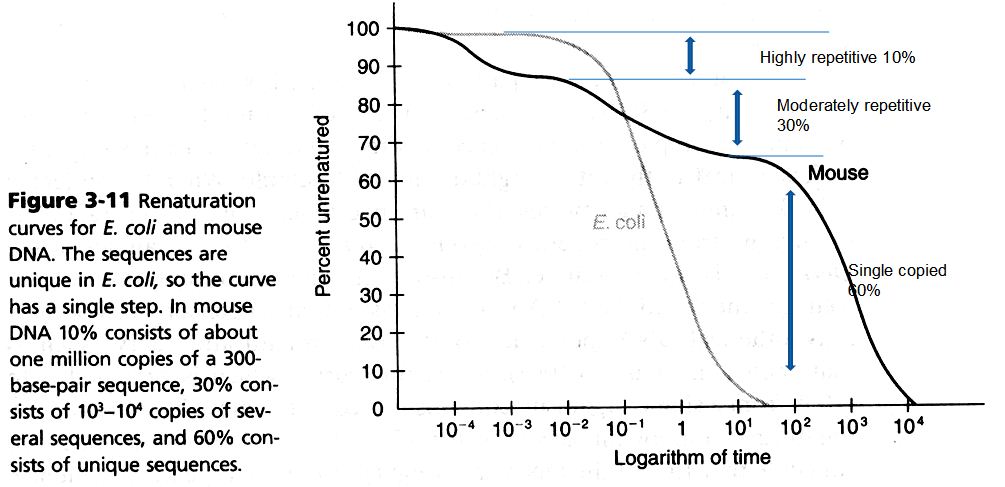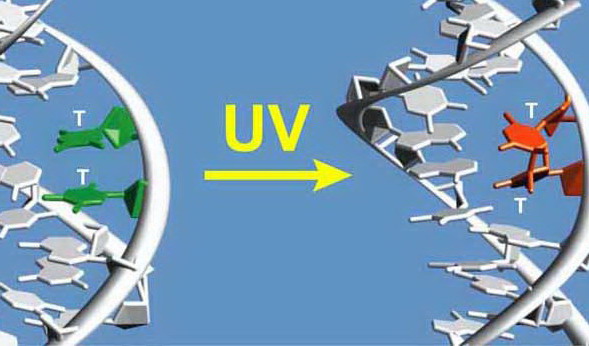UV absorption
- DNA absorbs UV light due to the conjugated aromatic nature of the bases; the sugar-phosphate backbone does not contribute appreciably(perceptibly/measurably) to absorption.
The wavelength of maximum absorption of light by both DNA and RNA is 260 nm, which is conveniently distinct from the λmax of protein(280 nm).
The absorption properties of DNA can be used for detection, quantitation and assessment of property.
- Hypochromicity
UV absorption at 260nm is greatest for isolated nucleotides, intermediate for single-stranded DNA(ssDNA) or RNA, and least for double-stranded DNA(dsDNA)
The classical term for the change in absorbance is hypochromicity. For example, dsDNA is hypochromic (from the Greek for ‘less colored‘) relative to ss DNA, which is hypochromic relative to isolated nucleotides.
Thermodynamics of DNA
- Denaturation: the transition of macromolecule from the native state to the denatured state. For DNA, under denaturing conditions (heating or high pH), double helix is separated to generate single-stranded form.
Melting Temperature(Tm): the temperature at which the rise in A260(absorbance at 260nm) is half complete during denaturation.
Factors that affect the Tm
1. G+C content: the higher G+C content, the higher Tm.
2. Ionic strength: The Tm increases as the cation (+) concentration increases. like Na+, K+ or Mg2+.
3. High pH or Agents that disrupt H-bonds or interfere with base stacking: formamide (甲酰胺)or urea (尿素)will decrease the Tm.
4. The imperfect hybridization between related but not completely complementary strands will reduce the Tm, about 1 °C for each percent mismatch.
The process of denaturation can be observed conveniently by the increase in absorbance as double-stranded nucleic acids are converted to single strands
- Renaturation: Process of a macromolecule returning to its native 3-D structure. For DNA this involves the two strands of denatured DNA basepairing to restore the nature form of dsDNA. Also known as reannealing (重退火).
Requirements for renaturation:
1. Proper salt concentration: neutralize electrostatic repulsion
2. Proper reannealing temperature: 20-25℃ below Tm
Determinants for renaturation efficiency
(DNA renatures on cooling, but will form fully double-stranded native DNA only if the cooling is sufficiently slow to allow the complementary strands to anneal.)
1. Extent of base matching and
2. copy of matching regions
Thus, repetitive DNA renatures faster than single copy DNA

